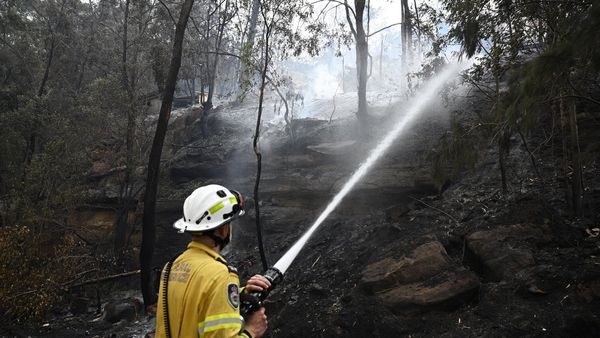
The centrepiece of the Albanese government’s budget will be a $14.6bn package of cost-of-living relief, paid for in part by savings of $17.8bn.
The treasurer, Jim Chalmers, has confirmed there will be new measures in the cost-of-living package in Tuesday’s budget, adding to anti-poverty advocates’ hopes that the government will implement a broad rise to the jobseeker base rate, not just a limited increase for those aged over 55.
While the government has not supplied a breakdown of the measures, Chalmers has previously hinted at “additional measures” for renters such as a rent assistance increase. The package includes the previously announced energy relief for households and small businesses, investments in energy efficiency and cheaper medicines.
The energy rebates of up $500 will go to 5.5m eligible households on government payments, and 1m small businesses.
Given the Morrison government’s $50-a-fortnight increase to jobseeker cost the budget $9bn over four years, the total of $14.6bn over four years on all cost-of-living measures to be revealed in Tuesday’s budget points towards a smaller jobseeker increase of about $40 a fortnight.
In an interview published on Saturday, Chalmers told Guardian Australia the “substantial” savings would “help us fund our priorities” including some of the recommendations of the economic inclusion advisory committee.
In April, Labor poured cold water on the committee’s recommendation for a “substantial increase” in the “seriously inadequate” jobseeker payment, warning that lifting the payment to 90% of the age pension would cost $24bn. The report also called for an increase in commonwealth rent assistance and the abolition of the activity test for childcare subsidies.
After first planning to limit an increase in the jobseeker base rate to those aged over 55, the government has used surging revenues in April to revisit cost of living relief for those aged under 55.
Chalmers has now promised that the cost of living package targeted at the most vulnerable “won’t all be limited by age” but has remained tight-lipped about whether this means an increase in the jobseeker base rate across the board, as some reports over the weekend suggested.
The Greens senator Janet Rice said if the reports are true “Labor’s planned increase to jobseeker is less than even the Liberals did under Scott Morrison, and is a slap in the face to everyone in desperate need of a substantive increase to the rate of Centrelink payments”.
“$2.85 a day is woefully inadequate and doesn’t even keep up with the rising costs of food and rent,” she said.
“This is still $500 a fortnight below the Henderson poverty line, and more than $200 below the recommendations of the government’s own hand-picked economic inclusion advisory committee.”
Chalmers said cost-of-living relief “that doesn’t add to inflation” will be the centrepiece of the budget.
“People are under the pump,” he said in a statement. “We’ve carefully calibrated and designed this budget so that it takes pressure off the cost of living rather than add to it.”
“This will be a budget in the best Labor tradition – help for the vulnerable with cost-of-living pressures, an eye on the future, and responsible economic management. It will see people through difficult times and set our country up for the future.”
In a possible hint at a return to surplus or at least an improved trajectory, Chalmers said the budget “will make inroads in cleaning up the mess we inherited from the Coalition”.
“Our aim throughout – whether it’s our cost-of-living package, our broader investments in energy or other efforts to grow the economy – is to make sure that this budget is part of the solution to high inflation and cost-of-living pressures, not adding to the problem.”
On Sunday evening the finance minister, Katy Gallagher, revealed the budget will save and redirect $17.8bn, including $7.8bn of savings in the defence portfolio decided in response to the defence strategic review.
These have already been recommitted to other defence projects, including for the Aukus nuclear-powered submarine acquisition and long-range missiles.
The $17.8bn of cuts across government agencies, the targets of which will only be revealed on budget night, follow $22bn of savings and reprioritisation in the October budget.
Gallagher said the savings had been identified “as part of our ongoing work to repair the budget and get it on a stronger, more sustainable footing”.
“Labor is being upfront with the Australian people about the true state of the books and about the decisions we are making to support those in need and grow our economy,” she said in a statement.
The reprioritisation of the funds “demonstrates Labor’s commitment to the ongoing task of managing the budget responsibly and in the interests of all Australians”, she said.
On Saturday Chalmers said the “substantial” savings “compare to zero dollars of savings in the March budget last year under our predecessors”.
“I think that demonstrates that we are prepared to redirect funding from areas which are less useful, less productive, or less fair into areas that are more productive and more useful.”







